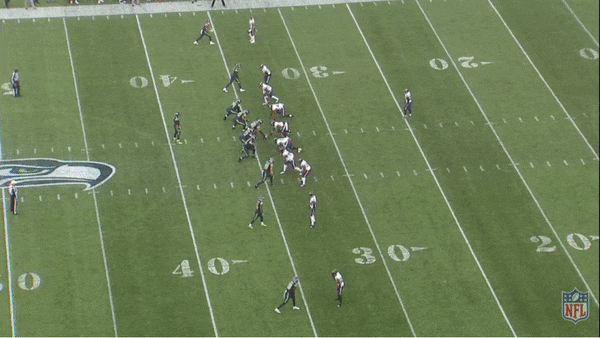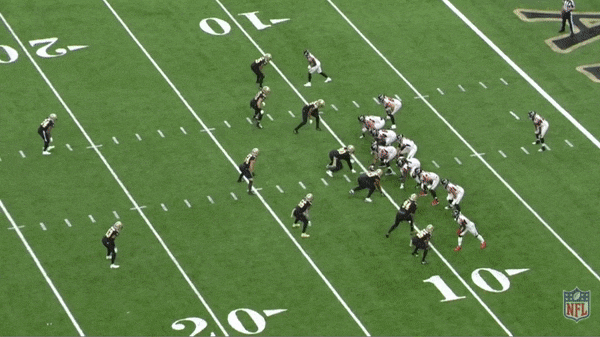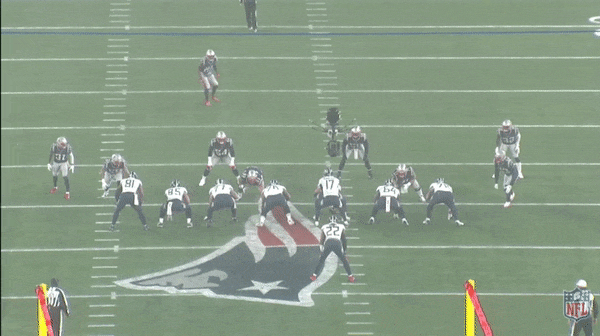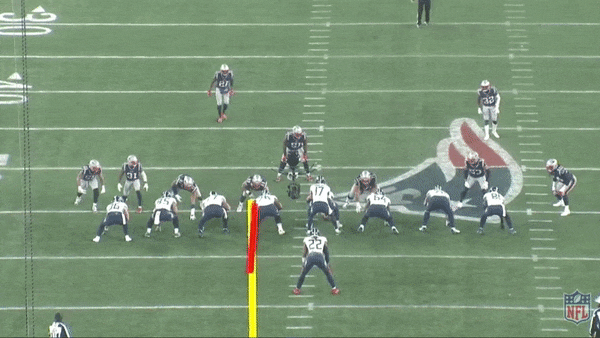
Don’t tell our boss, but the Philadelphia Eagles aren’t too far away from becoming the modern NFL’s model franchise. From the unbelievable rise of Doug Pederson to the incredible comeback of Nick Foles, we’re spending today celebrating the defending Super Bowl champs.
The Eagles proved to be the ideal modern football team en route to winning Super Bowl LII. They maximized the talent on their roster given the NFL’s current salary-cap structure, as the front office took advantage of having a great quarterback on his rookie contract and traded for veterans who were on cheap deals. Coach Doug Pederson’s situational decision-making and aggressiveness in spots where others might let off the gas aligned with analytics. And Philly’s RPO-heavy offense highlighted the league’s latest schematic trend.
If the Eagles are the perfect team for today’s NFL, then Zach Ertz might be the perfect player. No member of the roster embodies Philly’s cutting-edge approach quite like the 27-year-old tight end. It’s fitting that Ertz scored the game-winning touchdown in the Super Bowl, capping a seven-catch performance that showcased everything he brings to this table.
Yet to understand all the ways Ertz mirrors Philly’s approach, we have to go back to early 2016. At the time, Ertz was coming off the best season of his young career, as he caught 75 passes for 853 yards while finishing second on the 2015 Eagles with 112 targets. He was on his way to becoming one of the league’s top tight ends, and general manager Howie Roseman rewarded him with a five-year, $42.5 million extension—just one in-house signing in a wave of them. By extending Ertz a year before his rookie deal would have expired, Philly avoided the risk of losing him in free agency while retaining him below market value. This season Ertz carries a cap hit of $4.9 million, which ranks 18th among tight ends. He’ll make less than players like Eric Ebron, Dwayne Allen, and Dion Sims. Ertz’s deal is back-loaded, but even with the jump to $11.8 million next season (the biggest cap hit on the deal), the Eagle is set to have the third-highest cap hit among tight ends. That’s value.
Ertz’s contributions on the field further exemplify Philadelphia’s philosophy. Look no further than his performance in the Super Bowl. During the 2017 season, the Eagles lined up in 11 personnel (three receivers, one running back, one tight end) on 65 percent of their offensive snaps, according to Warren Sharp’s data. That’s higher than the league average (59 percent), but it’s not as if Philly’s offense was predictable when it came to personnel usage. The Eagles’ version of 11 personnel could resemble 10 personnel (one back and four receivers) or empty sets on any given snap, and that’s largely because of Ertz’s ability to operate so effectively as a wide receiver.

Take this play from the second quarter of the 41-33 win over the Patriots. On a third-and-7 from New England’s 38-yard line, the Eagles break the huddle with three receivers, including Ertz, bunched to the right. Before the snap, Ertz motions inside, tipping Nick Foles to the fact that the Patriots are in man coverage. That leaves Ertz and outmanned linebacker-safety Jordan Richards one-on-one in the slot. After a quick fake outside, Ertz breaks inside and leaves Richards in his tracks. Foles finds him with a toss over the middle, and the Eagles pick up an easy third-down conversion.
Every detail of Ertz’s play speaks to what made the Eagles the best team in football last season. Check out where Ertz makes his break: exactly 7 yards past the line of scrimmage, right at the first-down marker. Philly’s offensive line masterfully picks up New England’s five-man pressure, and Ertz finishes the job by outclassing a defender in space.

Fast-forward to the Eagles’ game-winning touchdown drive in the fourth quarter. Again, Philly uses alignment and motion to its advantage. It has three receivers bunched right and Ertz split out on the backside. At the snap, running back Corey Clement screams toward the bunch side, and, as New England safety Duron Harmon follows, a massive void opens up in the middle of the field. Ertz then shakes free of Devin McCourty (an impressive feat in its own right), and Foles places the ball in the space abandoned by Harmon. Ertz corrals it for the go-ahead score.
Ertz’s Super Bowl showing makes it tempting to lump him in with many other tight ends, who operate as de facto receivers in today’s NFL. But the genius of the Eagles offense is that Ertz vacillates between traditional and nontraditional tight end alignments depending on formation. Ertz received 53 targets from the slot and 53 targets as a standard inline tight end in 2017, according to Football Outsiders. That’s no accident. This variation helped Philly excel on late downs all season, and the Super Bowl was no exception. The Eagles torched the Patriots by going 12-of-18 on third- and fourth-down conversions. They succeeded in a pair of short-yardage scenarios that took advantage of Ertz’s inline positioning.

The first instance came on a third-and-1 with 9:04 left in the third quarter. The Eagles came out in 13 personnel (one back, three tight ends), with Brent Celek and Ertz inline on the right side of the formation, and Ertz more to the outside. Given the down and distance, this formation all but guaranteed that Ertz would see a cornerback in man coverage. The Eagles execute a quick play fake out of a typical rushing alignment before Foles delivers a throw to Ertz as he releases off his initial block. By physically manhandling his defender and then perfectly timing his release, Ertz presents Foles with a simple decision.

Then, facing a fourth-and-1 from their own 46-yard line with 5:40 to go, the Eagles aligned in 13 personnel once again. The Pats countered by going to their base defensive personnel in man coverage—exactly what the Eagles wanted. Philly uses all the bodies bunched in the middle of the field to its advantage, perfectly executing a mesh concept between Celek and Ertz that picks off Ertz’s defender and leaves him wide open coming over the middle. One quick strike and both the drive and the Eagles’ title dreams are saved.
The entire design of that play was aimed at getting Ertz the ball in the most crucial moment of the season. Rightfully so: No player on Philly’s offense more aptly represents who the Eagles want to be. Ertz is an appropriate Super Bowl hero; he should also be Philly’s most potent offensive playmaker in the season to come.
